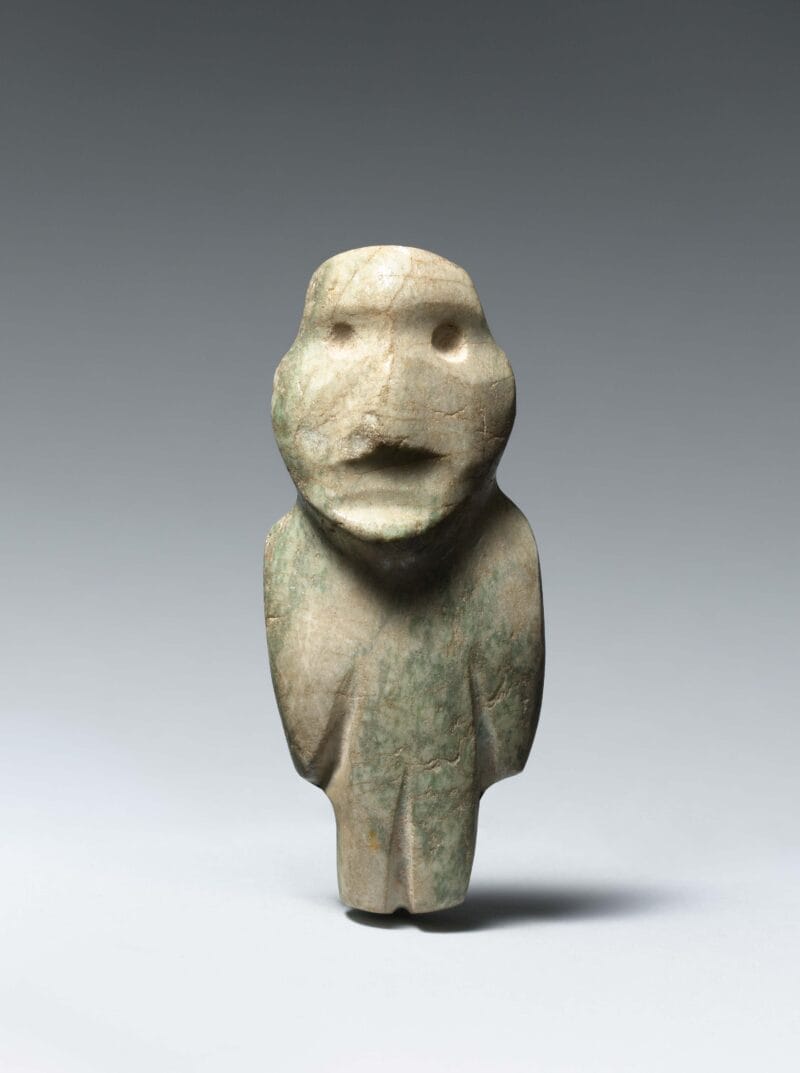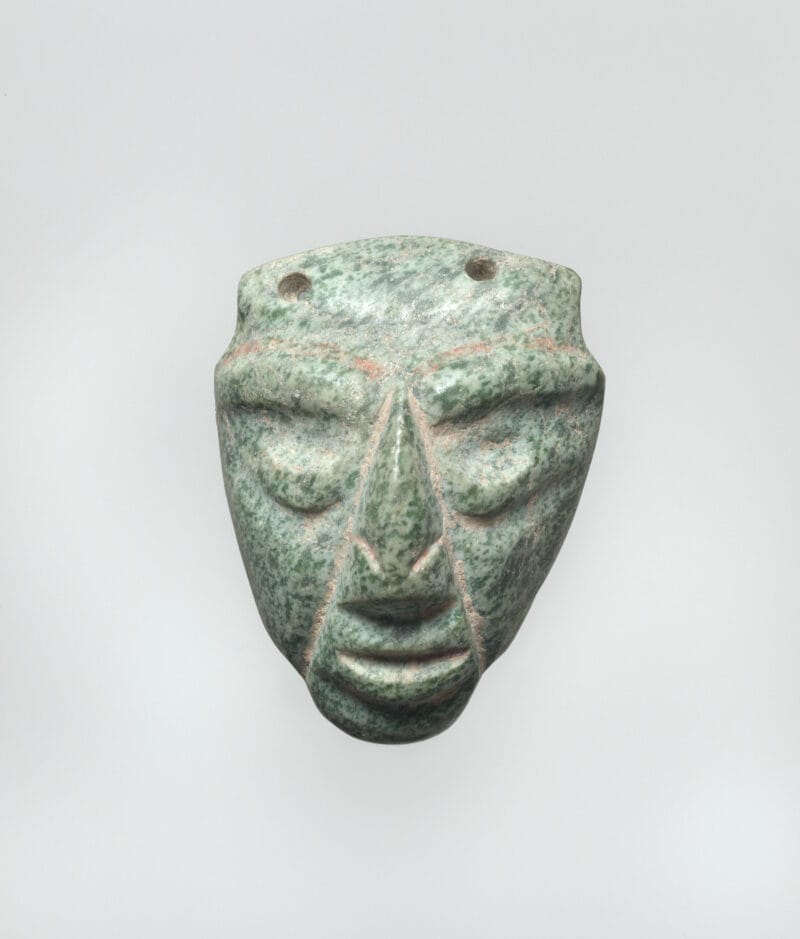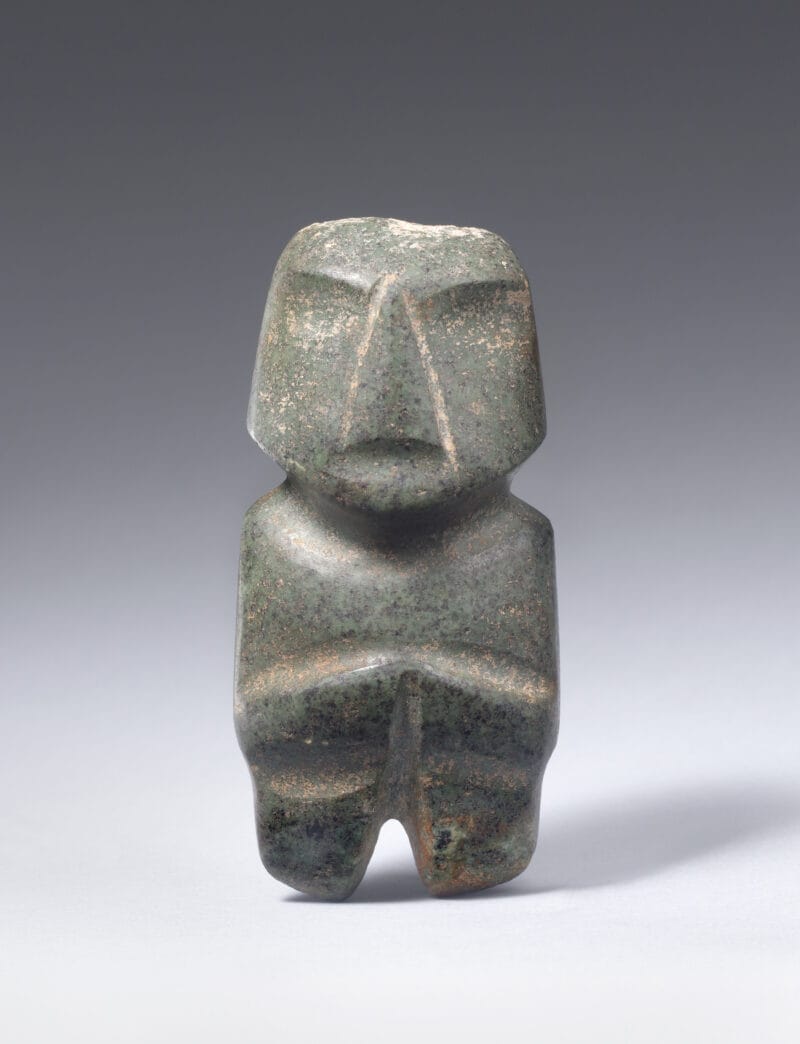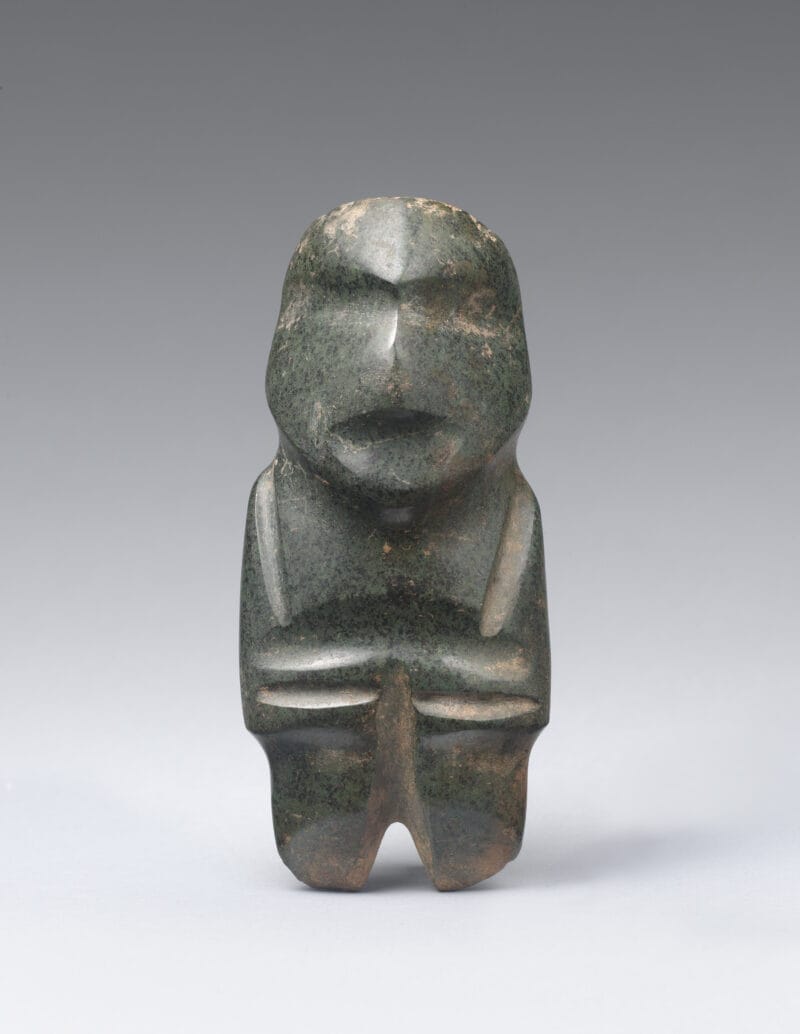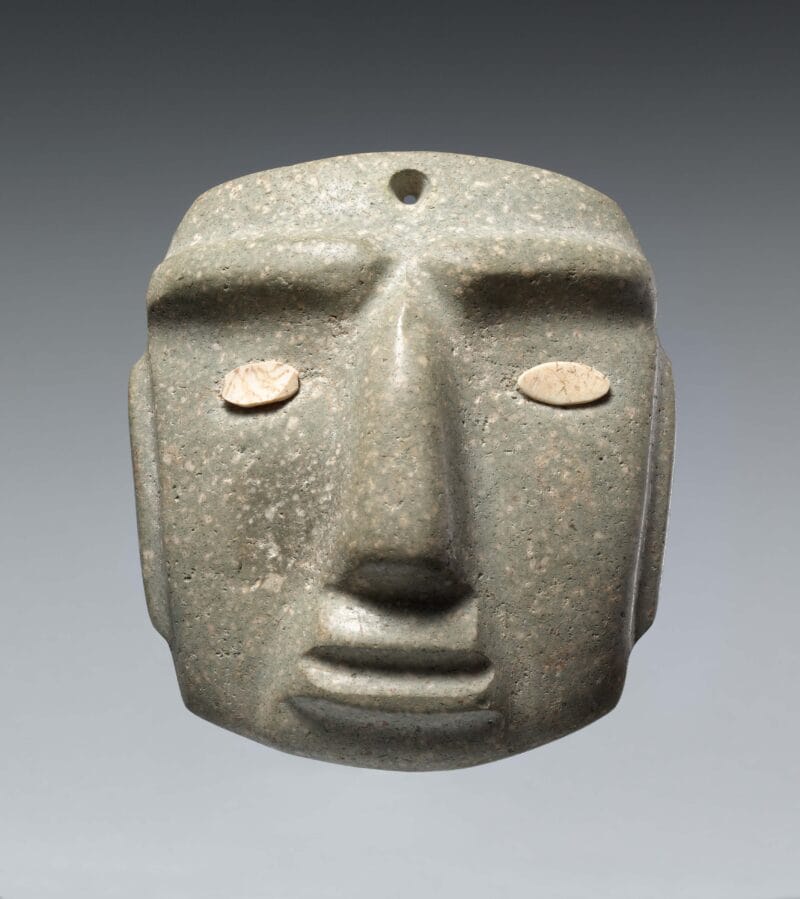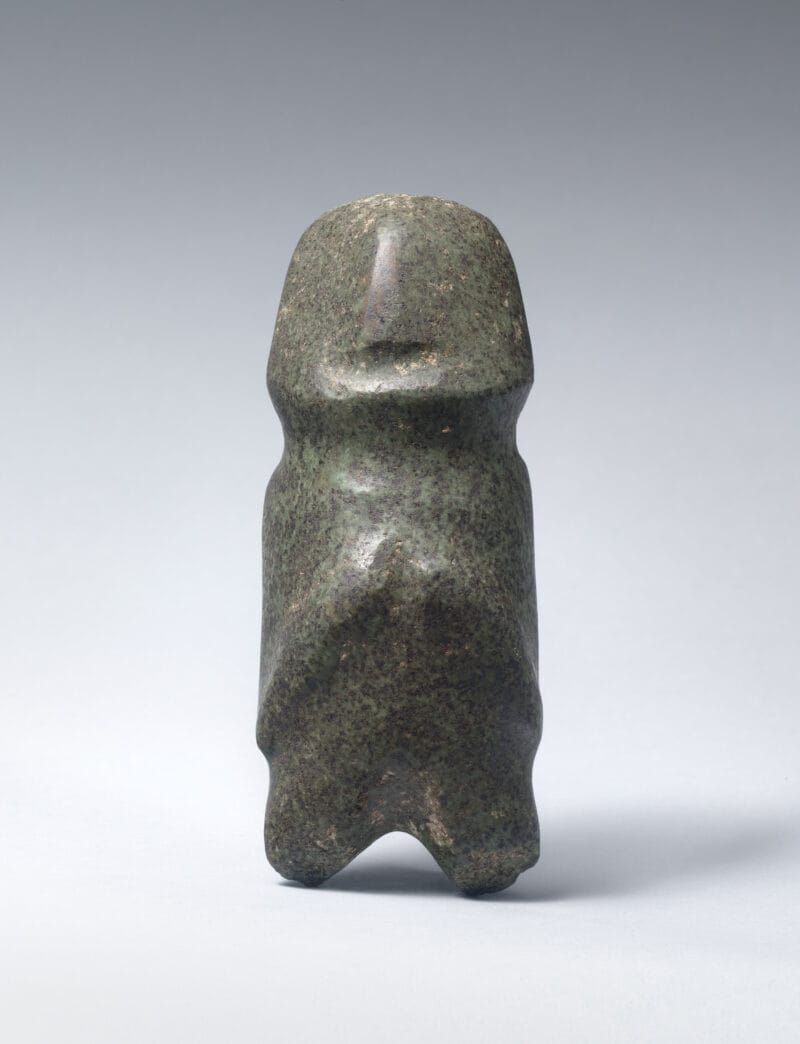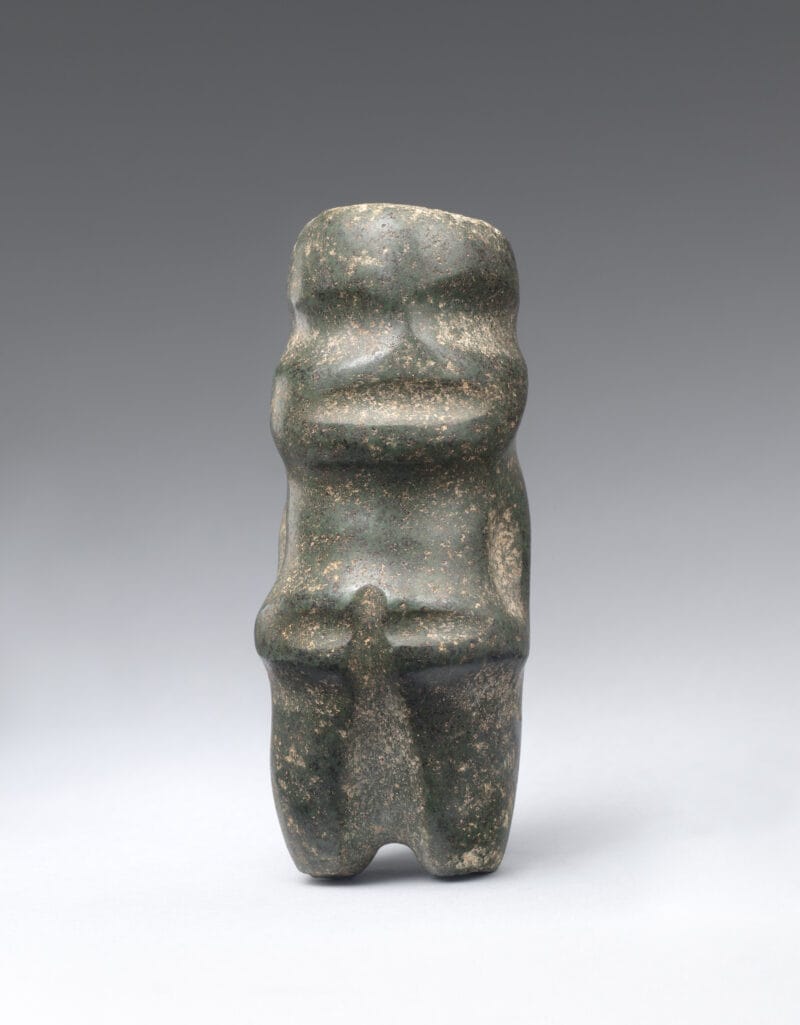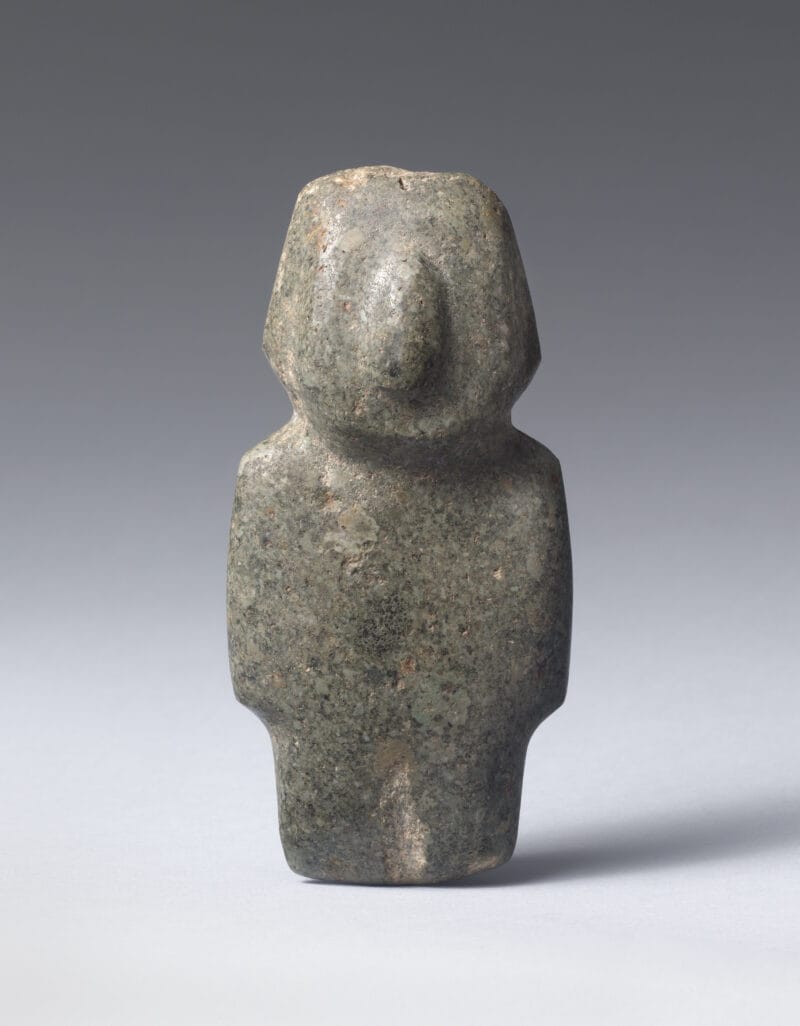
About the Object
This figure was carved and polished from unidentified green-brown stone, possibly jadeite. Mezcala figures such as this were usually recycled from earlier stone hand axes. This work perhaps retains some of the axe features such as the deep vertical cut through the legs and narrow “feet” at the bottom, which appear similar to a dulled blade. Meanwhile, the handle has been shaped into an abstracted human head and face. The rounded face, eyebrow ridge, indentation for eyes, and open mouth all display Mezcala traits, while the ears first emerge around the period associated with this particular variant of the style and usually feature in all future adaptations of Mezcala figures.
Additional Information
Due to looting and a lack of archaeological excavation and analysis, a great deal remains unknown about Mezcala-Chontal traditions originating in what is now the Mexican state of Guerrero. However, interest in such extraordinary abstract forms has been generated over the past century, helping scholars piece together more knowledge about these remarkable traditions and their context within the broader Mesoamerican world.
[Claiborne Gallery, Santa Fe, NM];
The Jan T. and Marica Vilcek Collection, 2006-2010;
Gift to The Vilcek Foundation, 2010;
Related Objects
You may also be interested in
Nari Ward: Home of the Brave
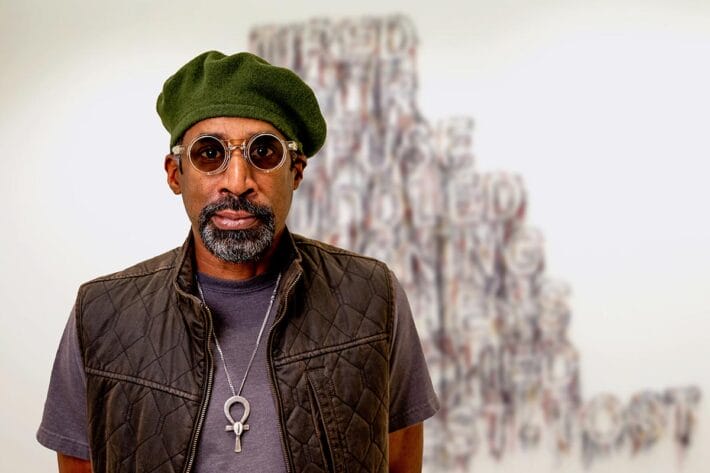
Nari Ward: Home of the Brave

Nari Ward


